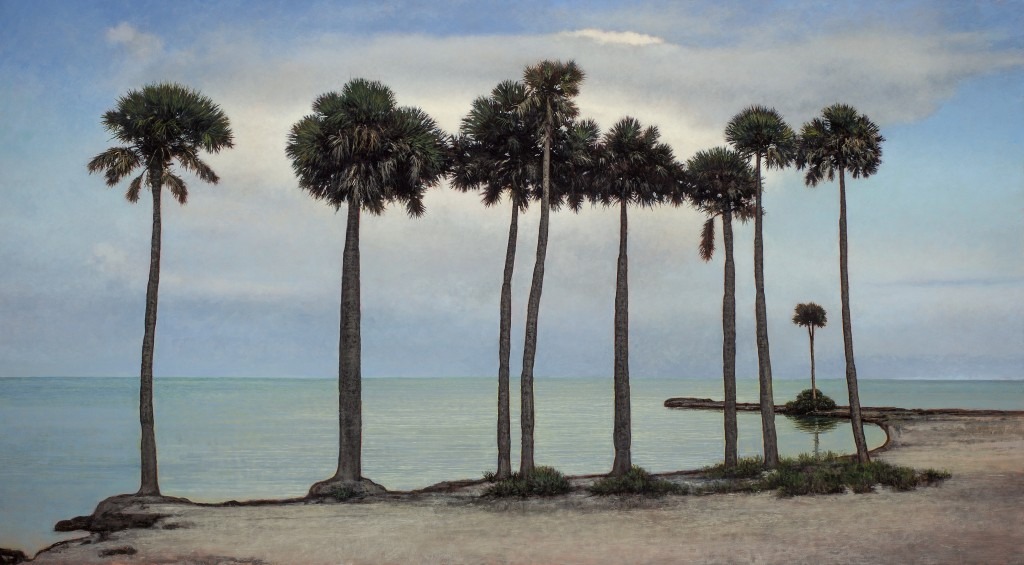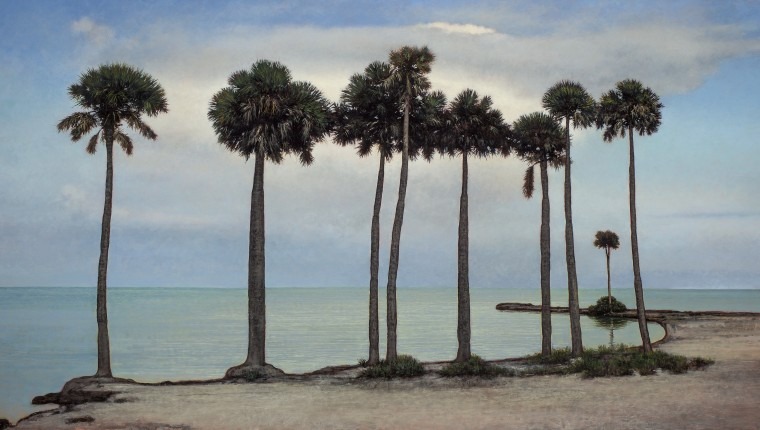from Mark and Jeff Aeling
In St. Petersburg FL, Mark Aeling’s work requires little, if any, introduction. Mark’s towering metal sculptures define St. Pete as much as the city’s murals. They demarcate the Sundial shopping center, commemorate the world’s first commercial flight, pay tribute to those who lost their lives in the days surrounding 9-11, and honor the role of law enforcement in our community.
Mark’s brother Jeff Aeling makes most of his art outside of Florida. The St. Louis-based landscape painter prefers mountains to Florida’s over-developed strip mall aesthetic. But for a limited time only, you can see both brothers’ work in St. Pete, as the newly renovated Soft Water Gallery (formerly Soft Water Studios) hosts Jeff Aeling’s Florida Landscapes through May 6.
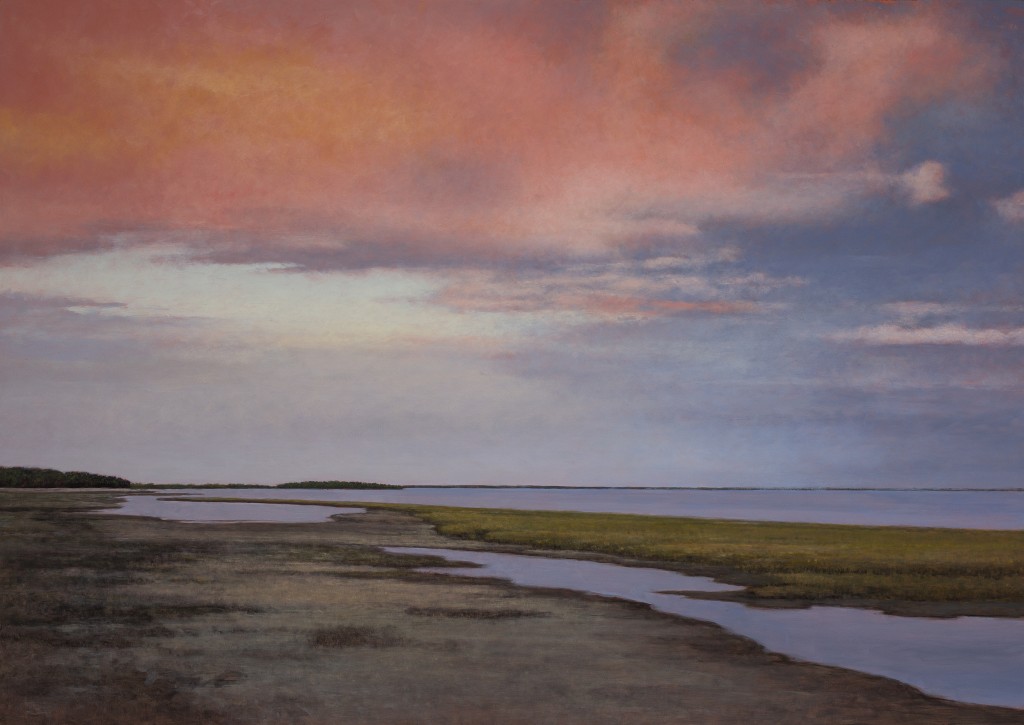
How did art become the Aeling family career?
“It’s kind of in the blood,” says Mark.
It’s making a living as an artist that’s the hard part. But as Mark and Jeff’s stories illustrate, it is possible.
The more I spoke with the two brothers, the more themes emerged. There’s no real formula for achieving success as an artist, but these many pearls of wisdom I pulled from the Aeling brothers’ stories could help you along the way.
Make creativity a part of your family experience.
Mark and Jeff aren’t the first Aelings to practice art. Their father was a Sunday painter, their mother a crafter, and their grandmother enjoyed cake decorating among other creative work. All four Aeling siblings had creative pursuits growing up.
“Both [my father] and my mother were very supportive of creative endeavors when we were kids,” says Mark. “Jeff played guitar and did musical theater, technical theater and that kind of stuff. So I grew up going to school theater productions and seeing [my brother] David make ceramics. And Jeff was always making something. My sister was into theater as well. It was just part of the family experience.”
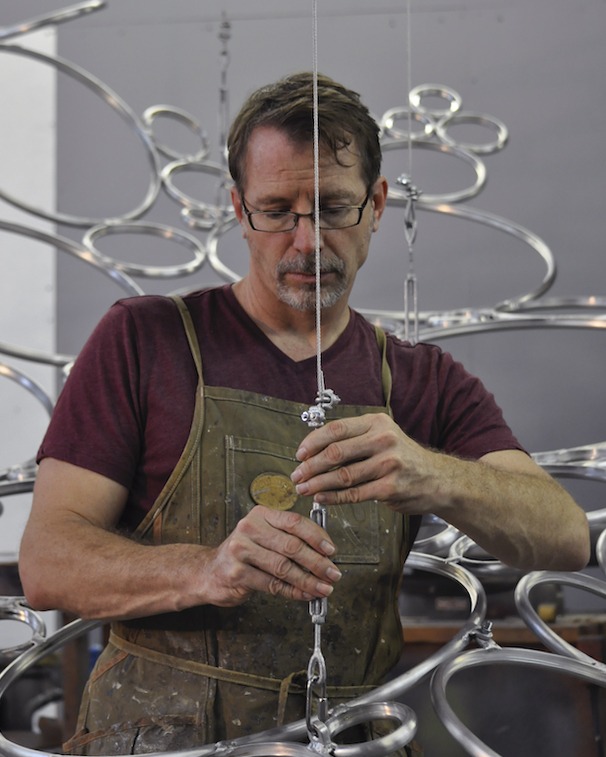
Stick with what you love. Ditch everything else.
None of the Aelings before Jeff had turned their art into a career.
Despite their creative interests, Mark and Jeff’s parents weren’t thrilled about Jeff’s decision to enter art school.
“They were not into it, to put it mildly,” says Jeff.
But he did it anyway. In some ways, Jeff felt that art was the only option.
“My academic career in high school was a disaster,” Jeff told Creative Pinellas.
When Mark followed in his brother Jeff’s footsteps years later, he chose to major in graphic design, hoping to assuage his parents’ concern that he wouldn’t be able to make a living as an artist.
“I went in for graphic design to try and be a little more pragmatic and show my parents that I was thinking of a career,” Mark says.
It didn’t last.

Don’t be afraid to course-correct.
Both Aeling brothers tried several different media, different schools, and different teachers when they were young. If something wasn’t working, neither was afraid to make a change – even if it meant moving across the country and back again.
Jeff began considering a career in art while still in high school. At that time, he was taking classes in jewelry making.
“I thought I was going to be a jeweler,” says Jeff, who changed his mind with his first drawing class. And changed his mind again the moment he tried painting. When he graduated high school and applied to Kansas City Art Institute, Jeff had a portfolio and plans to be a painter.
But here again, things changed. Jeff had trouble finding a suitable mentor in Kansas City who was also a painter. He transferred to the School of the Art Institute of Chicago, bouncing from one painting teacher to the next until he returned to Kansas City. Jeff’s ideal mentor ended up being an aging printmaker at Kansas City Art Institute.
“The teacher that I got was a dinosaur,” Jeff recalls, but “he was surprisingly liberal in his approach to teaching art.
“He didn’t care what you drew — subject matter was immaterial to him. As far as he was concerned, that was the kind of stuff he couldn’t teach. His philosophy was that you have to do what you want to do.
“He’d say, ‘I’ll give you my opinion, but that’s all it is. You have to figure that out for yourself. What I can help you with are the pure mechanics of getting control over your hand and learning how to draw properly.’”
“He was just perfect for me,” Jeff continues. “He was a very difficult guy, but I really liked him. He really took me on. I became his head student.”
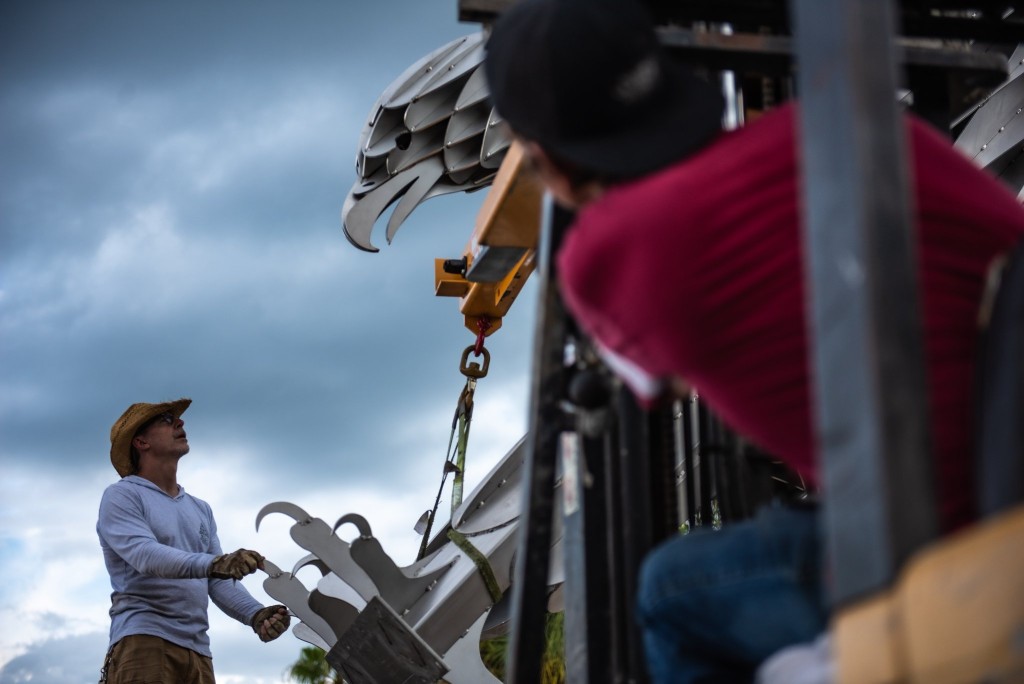
Like Jeff, Mark began his art studies in high school.
“Every credit hour I was allowed, I spent up in the ceramics department,” says Mark. “We didn’t have a sculpture department, but we had ceramics, and I took independent study ceramics for probably six semesters of high school, and I just made clay sculptures. I carved my first bust in wood in 7th grade, and I modeled my first bust in clay in 9th grade. So I always had an interest in three-dimensional work.”
Seeing Jeff go to art school and then find work as an artist encouraged Mark to follow his own dreams of becoming an artist.
“Jeff definitely paved the path for me,” Mark says of his older brother.
Like Jeff, Mark jumped from one art school to the next, attending Colorado State University and Maryland Institute College of the Arts before settling on the University of Washington in Seattle.
Doing scenery is a great way to hone your skills as an artist.
Jeff did a lot of technical theater in high school. After he graduated, he leveraged this experience to become a scenic artist.
“I eventually got into designing, and that’s how I made money,” says Jeff. “Being an artist — it’s a job. You go and do what you have to do, but it’s skilled. You’re painting. You’re making stuff.
“In some ways, it’s really good for you. You have to adapt to what’s required of you, so you get to learn a lot of new stuff on the fly.”
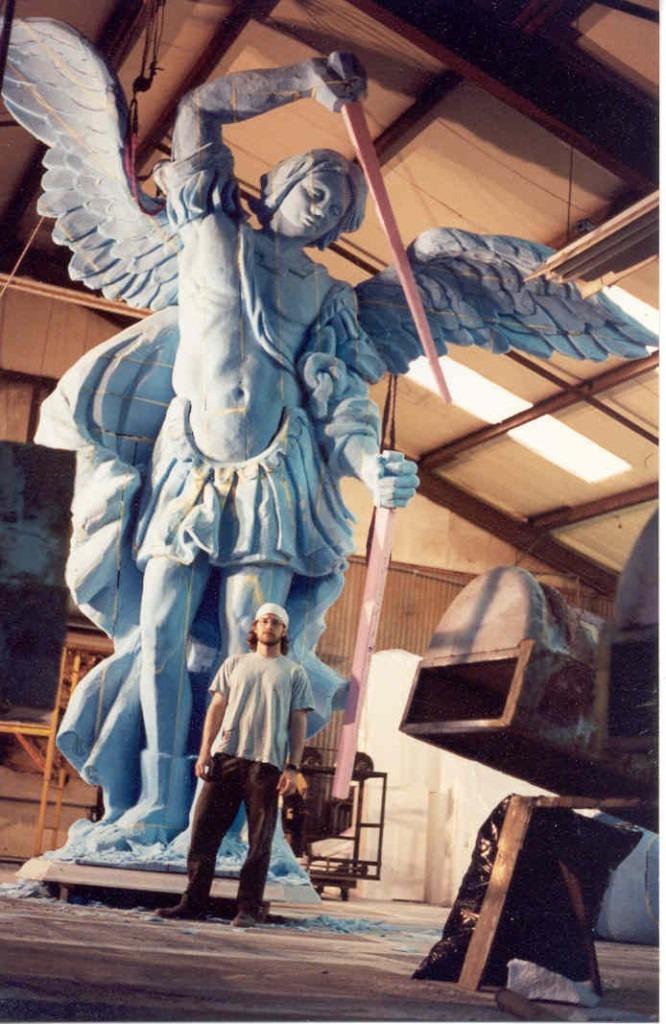
Mark also went into scenery when he graduated, getting his first professional art job for the Seattle Opera.
“Doing scenery is our training,” says Mark. “There’s nothing better because it’s a job, but it’s a creative job. I learned more about the creative process with the opera than I did in four years of undergraduate school.
“It’s the reality of taking an idea and manifesting it into reality. I learned about scale and how to measure, how to work with a plan and elevations, and how to manifest a concept in two dimensions that could be converted into a three-dimensional form. That’s all theater training.”
“It’s really good because you can’t bullshit it,” Jeff chimes in. “If someone comes to you and shows you some plans and says ‘make an ox cart,’ it better look like an ox cart. You can’t say, ‘Well, this is my version of an ox cart.’ Metaphor doesn’t play into it.”
It could take 20 years to find success as an artist.
Jeff did scenic design up until 1987. Then he married and started his own company doing artist services for architects and interior designers.
“It took me 20 years to make a living as a painter,” Jeff says.
It finally happened for him in the few years leading up to 2000. Jeff was in his late 30s, working on a show about the passing millennium. As he researched the subject, he found that Y2K was just a symptom of the uncertainty and lack of control people always feel at the turn of the millennium.
“If you look at the history of millennialist events, there’s always a sense of stock-taking and uproar in it…” says Jeff. “In the process of digging into this as a topic, it occurred to me that if I’m going to try to delineate what this thing is, then I have an obligation to try to express behavior and a way of thinking that will get you through this.”
Around that same time, Jeff saw an inspiring collection of Whistler landscapes at the Art Institute of Chicago.
“They have a great collection of Whistlers,” says Jeff. “They were landscapes and seascapes, and just so minimally painted. The fewest number of strokes you could possibly imagine.
“The things just resonated with me. I was completely knocked out by them.”
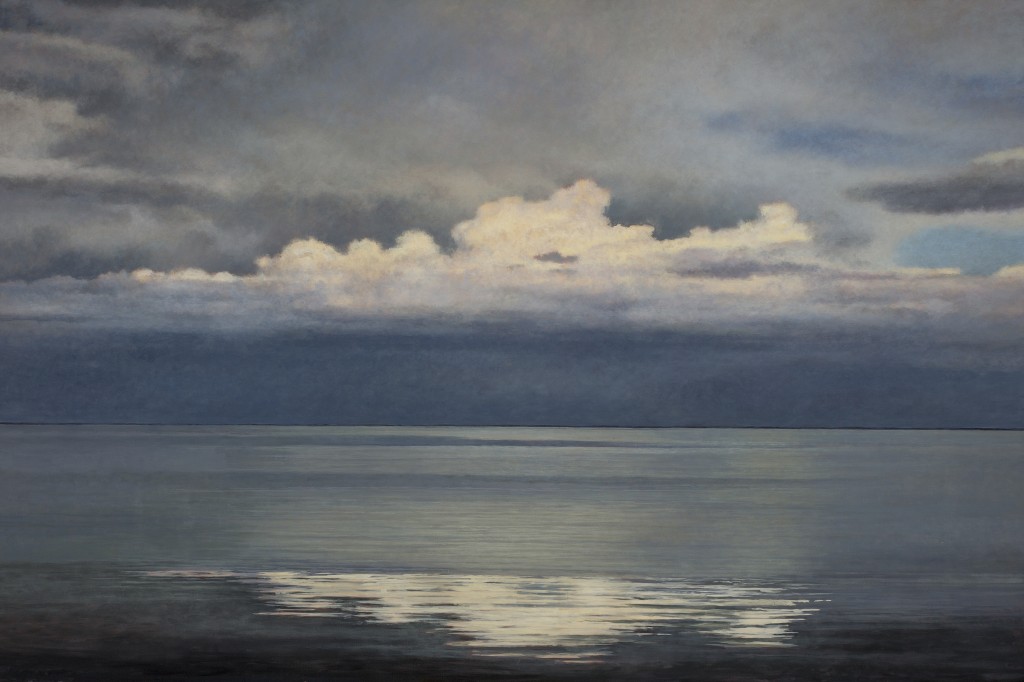
Jeff was at home in his studio one day, thinking of those Whistlers, when he painted one of his first landscapes.
“I’d always resisted landscapes,” says Jeff. “I thought, like most people, that this was a minor way of painting.”
But on that day, surrounded by all sorts of random materials from his business, Jeff threw one together.
“I used oil paint, lacquer – all these incompatible mediums – and just blasted out a painting on a little piece of Masonite,” says Jeff. “I got to the end, looked at it, and thought, ‘Holy shit. I’ve never done anything this good. This really has impact, and it’s deeply satisfying blasting these out.’”
“From that point on, I’d make 2, 3, 4 paintings in a day,” Jeff continues.
It occurred to him that these paintings and these landscapes could be the antidote to millennial nonsense. Grounding yourself in nature and artistic practice could help you stay sane in uncertain times.
“I remember seeing that show…” says Mark. “I remember seeing the landscapes and being blown away by them.”
“After doing the show, I got into my gallery in Chicago — Perimeter,” says Jeff. “Just by getting in that gallery, things happened. In the space of a year, I was making a living as a painter.”
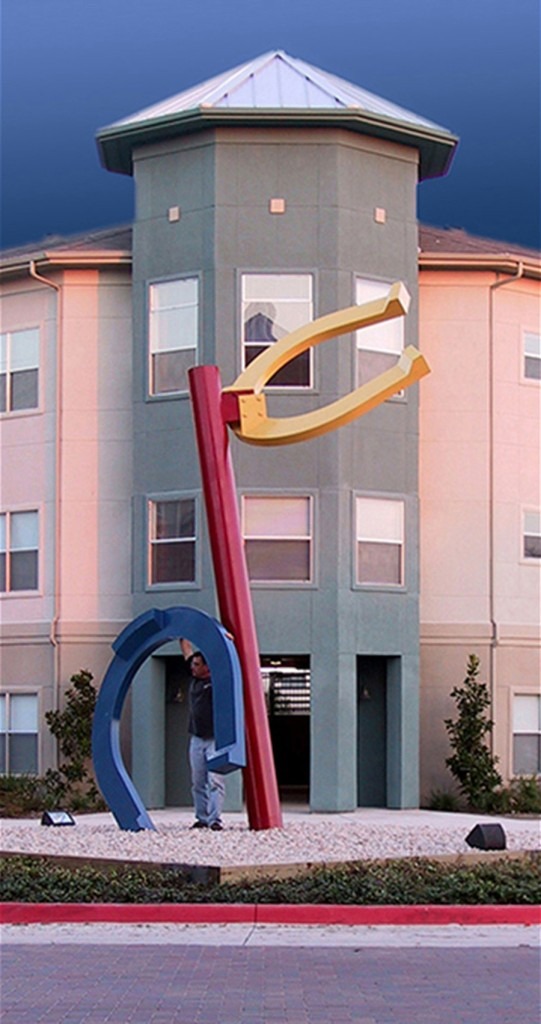
Mark’s breakthrough came with his first public art commission – a monumental game of horseshoes for the City of Austin TX, called Ringers.
“I’d been playing a lot of horseshoes at a bar next door to the studio and joking about creating a giant horseshoe game,” says Mark. “I pitched the concept and won the project.
“That was sort of an aha moment that there was a different way to approach this. It was the sort of problem-solving indicative of the graphic design classes I took earlier in undergrad. I hated the idea of taking these preconceived notions or having to be creative within a limited construct.
“It wasn’t until I had 20 years under my belt that I saw the potential to work that way and find it liberating instead of restrictive.”
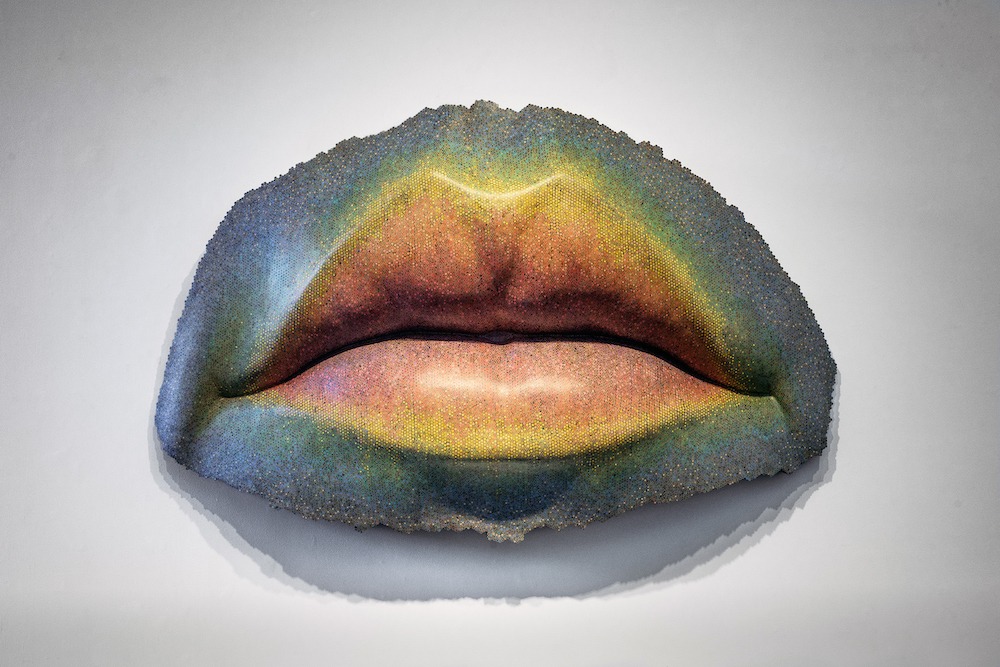
There’s more than one way to make a living as an artist.
Young artists often ask Jeff how to get their work into a gallery.
“It’s disheartening to tell them that at 25 years old, the odds of it happening are very low,” says Jeff. “And if it does happen, you’re in grave danger because you’re only 25 years old. Galleries will tell you that it’s all about the art, but the bottom line… they won’t keep you in the gallery unless they can sell your work.
“If they take you on at 25, it’s because they can sell your work…” Jeff continues, “and what you’re going to be doing when you’re 40 may be completely different…
“Galleries are looking for stability. They’re looking for someone that is a known quantity that has settled into what they’re going to be doing. And settling into what you’re going to be doing at 25 — that’s going to be a crapshoot.”
“And there’s more than one way to make a living as an artist,” Mark quickly points out. “Jeff sells primarily through galleries. The bulk of my revenue comes through public art commissions.”
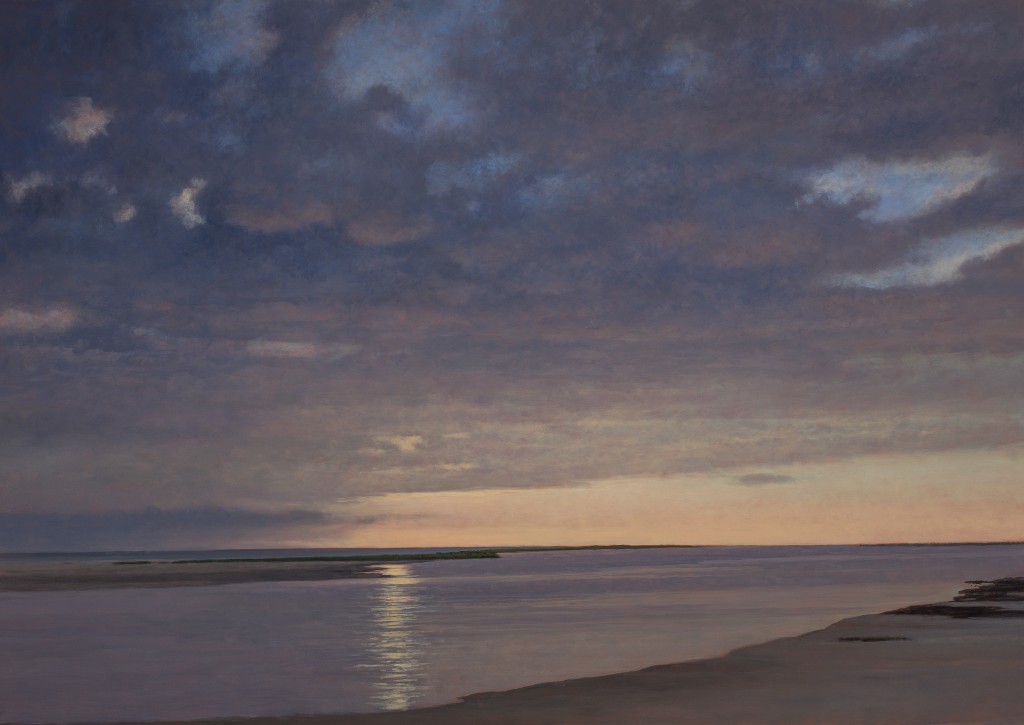
For a sculptor, gallery work can be cost-prohibitive due to the high up-front costs of creating the work. However, public art commissions provide funding as you go, letting a sculptor think much larger than their personal bank account.
“From a business perspective, it was like, I need to figure out how to crack this code because this is the realm that I want to play in,” says Mark.
“But choosing to play in that realm is a huge amount of responsibility. You’ve got a facility, you’ve got equipment, you’ve got labor – and you’ve got to balance all of these things. If you go over for a month on a project, [you have to consider] what that facility and that labor costs you a month. You may be bringing in hundreds of thousands of dollars for that project, but that’s an opportunity to lose hundreds of thousands of dollars if you don’t pay attention.”
Both brothers mention the academic track, but that’s hard too.
“[The golden ticket tenure track] is hard to come by these days,” says Jeff. “Schools are trying to save money by staffing with adjuncts. That’s a really difficult path because you can’t make enough money to support yourself. You have to have another job, basically.”
“[Finding success as an artist] is about identifying what your interests are, what the opportunities are, and where your skills are,” says Mark. “Then you marry all of that [together] so that you get to keep doing the thing that you connect with.”
Capture a feeling.
The thing that Jeff connects with most is landscapes. He prefers mountains and wide-open spaces.
When I asked him why he chose to do this Florida show, the answer was easy – Mark asked him to, and he loves his brother.
“Mark called me up and said, ‘Look, we’re doing a big renovation on the Soft Water Gallery,’” Jeff recounts. “’We’re going to get it up to snuff to be a dedicated gallery space. I’d like you to come down and do a show here.’”
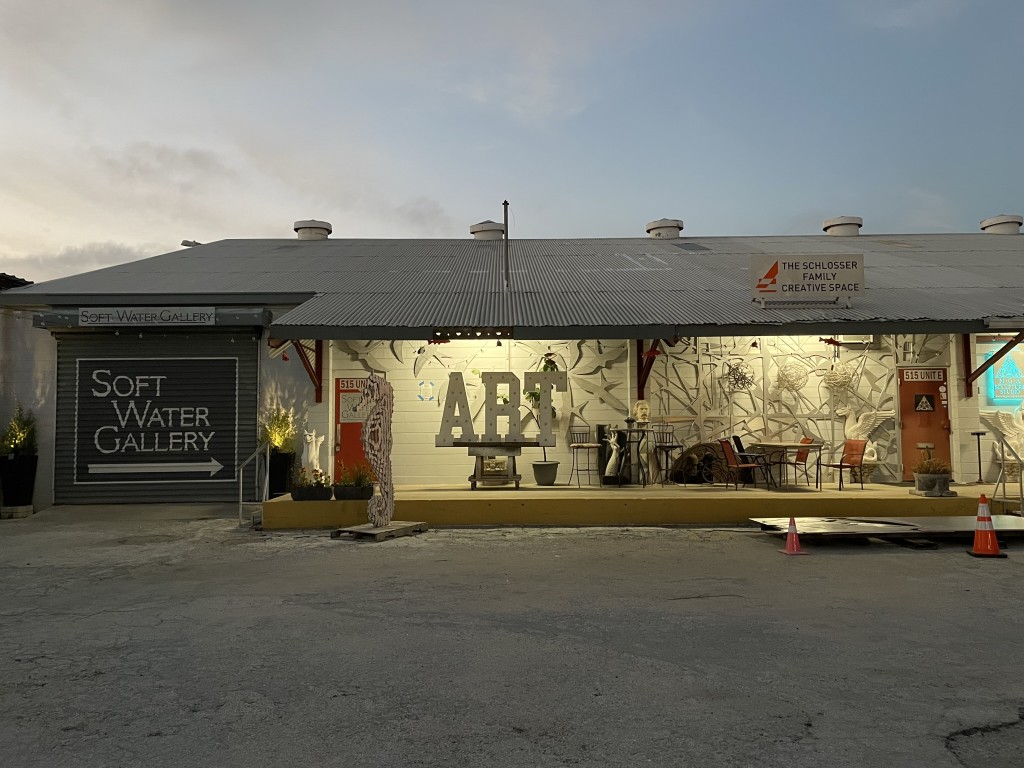
– photo by Jennifer Ring
“Mark’s wife Carrie [Jadus] took me out and about,” Jeff continues. “She’s familiar with my work, and she took me to a few places, Fort De Soto in particular. There were two spots — the downtown waterfront with all those old cabbage palms, looking out across the bay, and down to Fort De Soto. Fort De Soto completely blew me away.”
“I like places that enforce the feeling that you’re on a planet… where there’s this sense that what you’re seeing with your eyes continues on,” says Jeff, “When I got to Fort De Soto, and just downtown with those palm trees, I had that feeling…”
I felt the same when I stood before Jeff’s 15 Florida landscapes at Soft Water Gallery.

– photo by Jennifer Ring
The landscapes don’t just look like home to me – they feel like home. Standing before Jeff’s work, I felt as still as the palm trees in Cabbage Palms.

– oil on panel 48″ x 24″
Jeff builds that feeling into his creative process. Whenever he visits a spot with his camera, he does his best to capture both its look and its feel.
“When I go to paint it, I’m not trying to replicate the photographs,” says Jeff. “I’m trying to replicate the feeling of having been there.”
Jeff Aeling: Florida Landscapes
is on view through May 6
at Soft Water Gallery
515 22nd St. S.
St. Pete FL 33712
Details here
